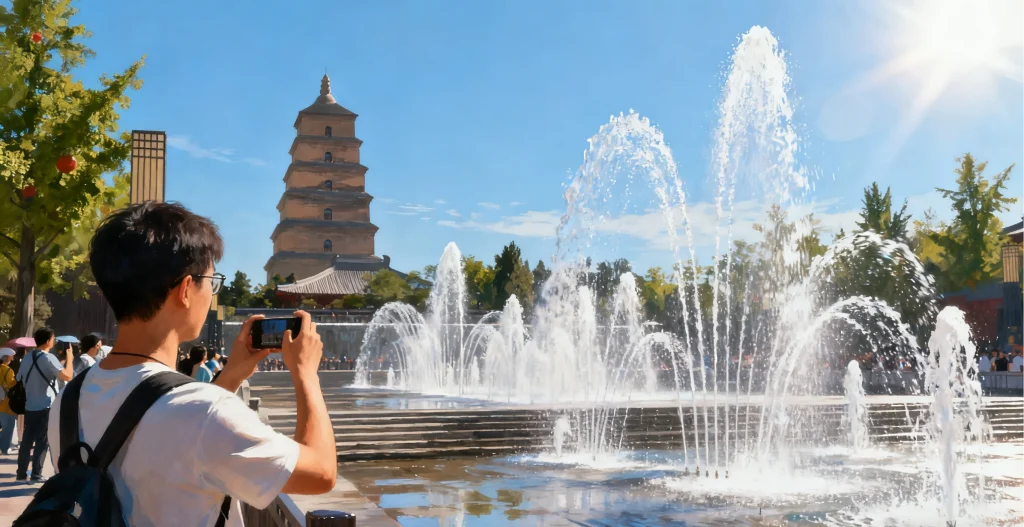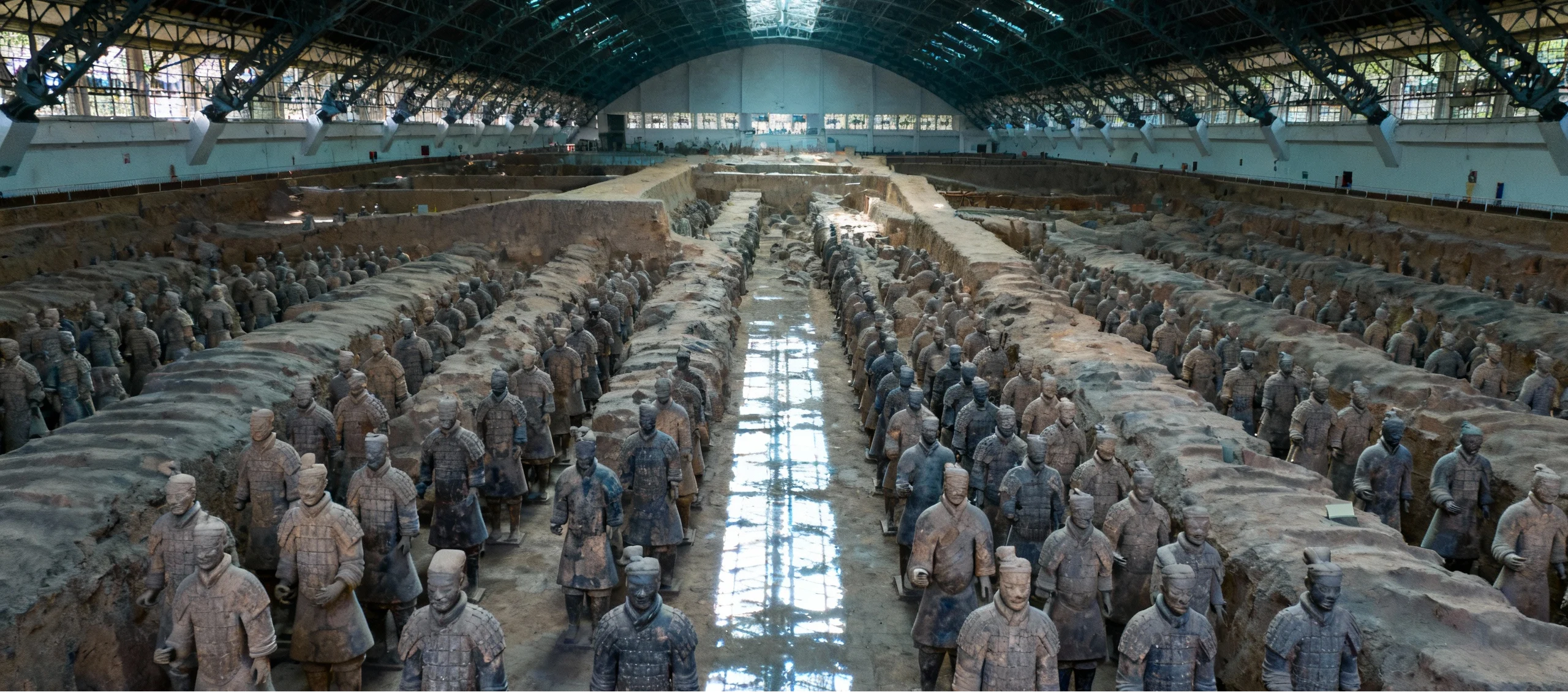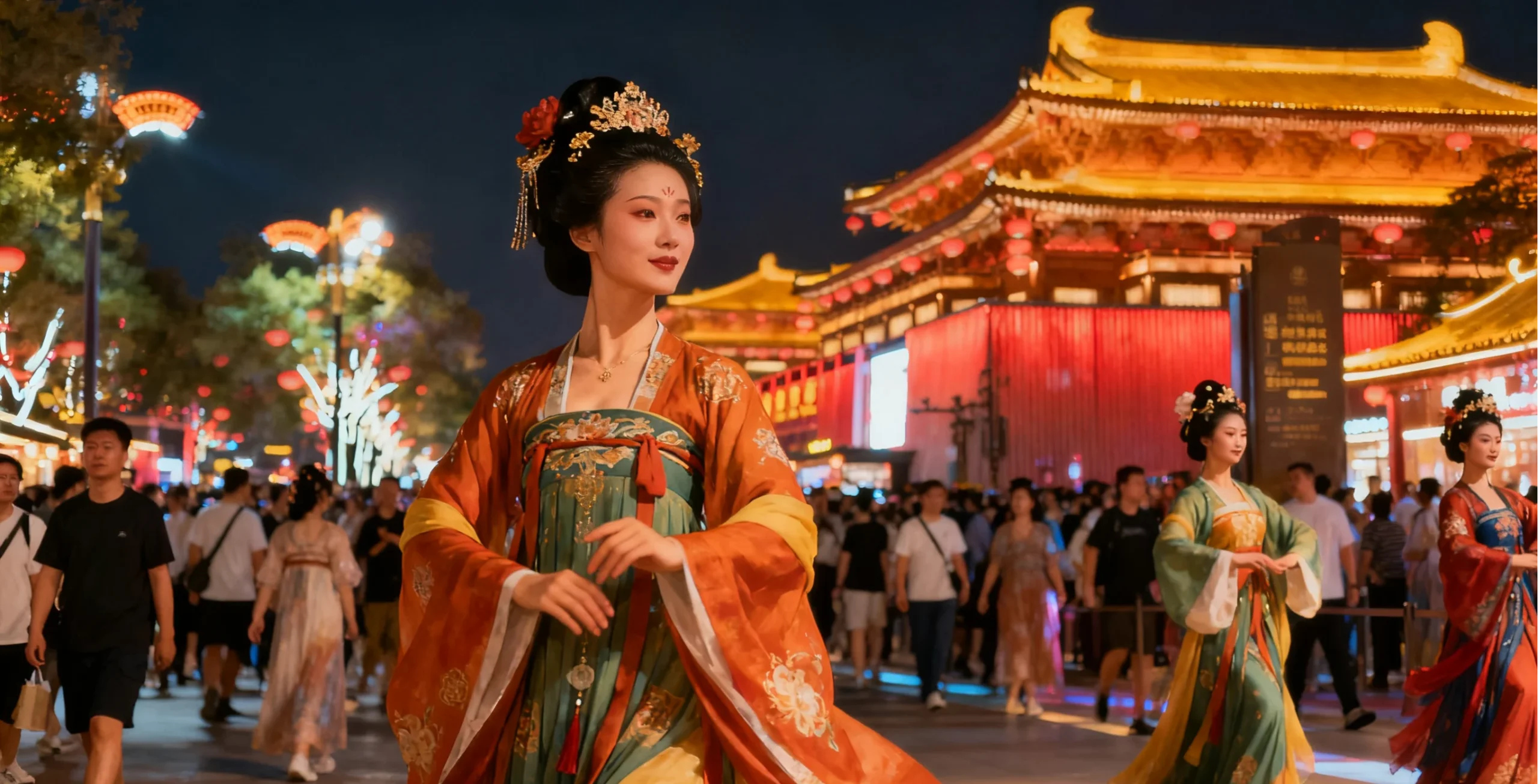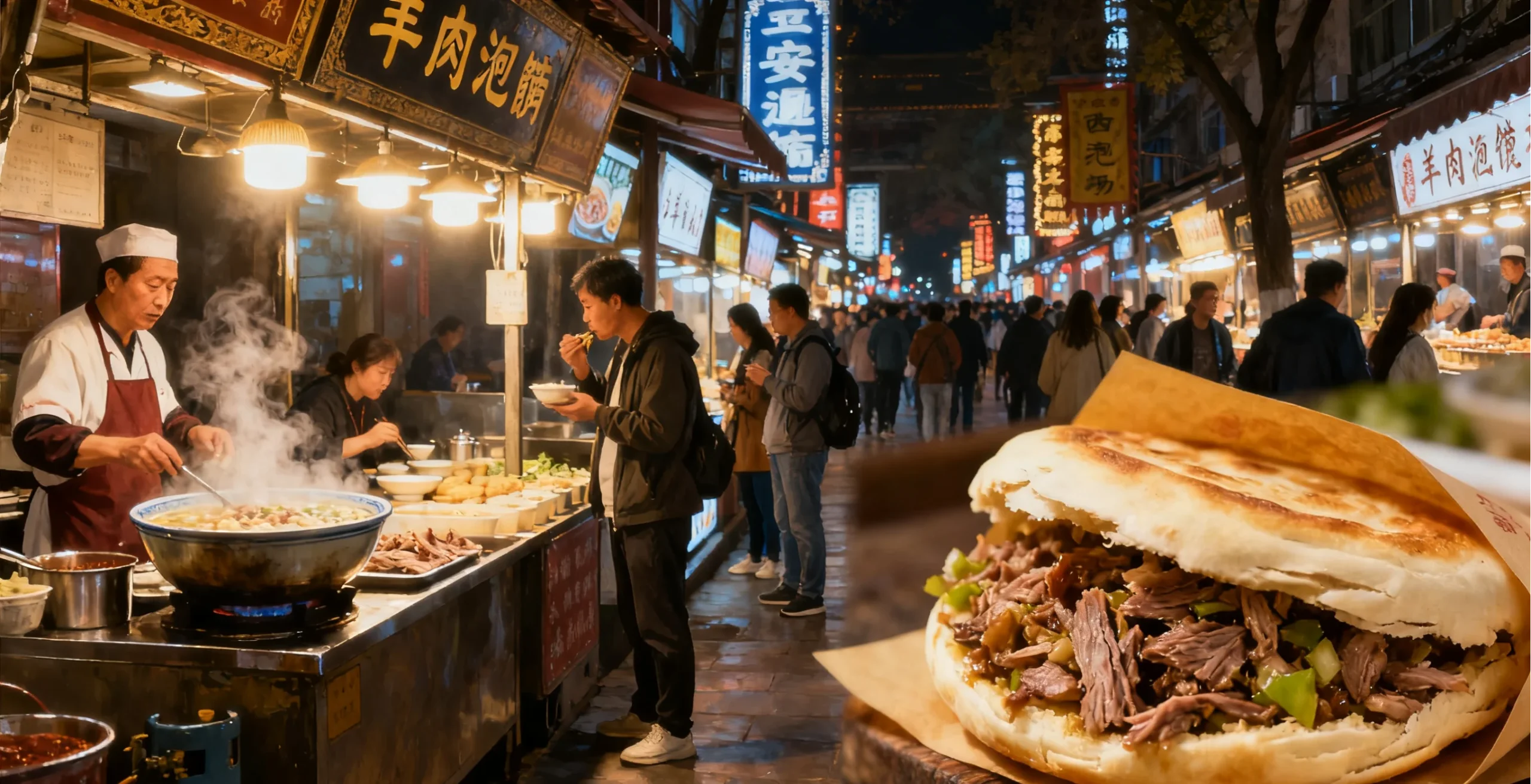Xi’an, an ancient capital that engraved the most glorious chapters of Chinese civilization, bears the vicissitudes and splendor of the capitals of thirteen dynasties. As the eastern starting point of the Silk Road, it is not only the “underground empire” guarded by the Terracotta Army, but also the Tang-dynasty tableau of “over Chang’an hangs one moon; in ten thousand homes the sound of pounding clothes,” as depicted by Li Bai.
This city offers both the radiant revival of prosperity at the Grand Tang Dynasty Everbright City and the contemporary glow reflected by tech towers in the High-tech Zone. The buried treasures of Hejia Village in the Shaanxi History Museum seem to converse across space with the fashion windows of SKP; the ink scent of rice paper on Shuyuanmen blends with the coffee aroma of Qujiang Creative Valley. This magical blend of ancient and modern makes Xi’an an inexhaustible treasury of civilization.
In the morning, head to the world wonder—the Terracotta Army of the First Qin Emperor. The standardized production of the warriors reflects Qin’s policies of “unified script and standardized carriage gauge.” They are not merely burial objects, but the material form and spiritual symbol of China’s first centralized empire, marking the beginning of the transition from feudal states to a unified era. After returning to the city, go to the North Square of the Giant Wild Goose Pagoda to watch Asia’s largest musical fountain. At the Grand Tang Dynasty Everbright City, it feels as if you have stepped back into the flourishing Tang: watch performance art (such as the “Roly-Poly Girl”), admire dazzling light installations, and experience extreme bustle and prosperity. This is not a historical relic, but an immersive culture-and-tourism block themed on Tang culture. Its core value lies in using modern light, architecture, performances, and behavior art to visualize and make tangible the elements of Tang poetry, calligraphy and painting, song and dance, and everyday life—turning the abstract “Magnificence of the High Tang” into a perceptible, touchable experience that revives today’s collective imagination of Chang’an’s golden age.
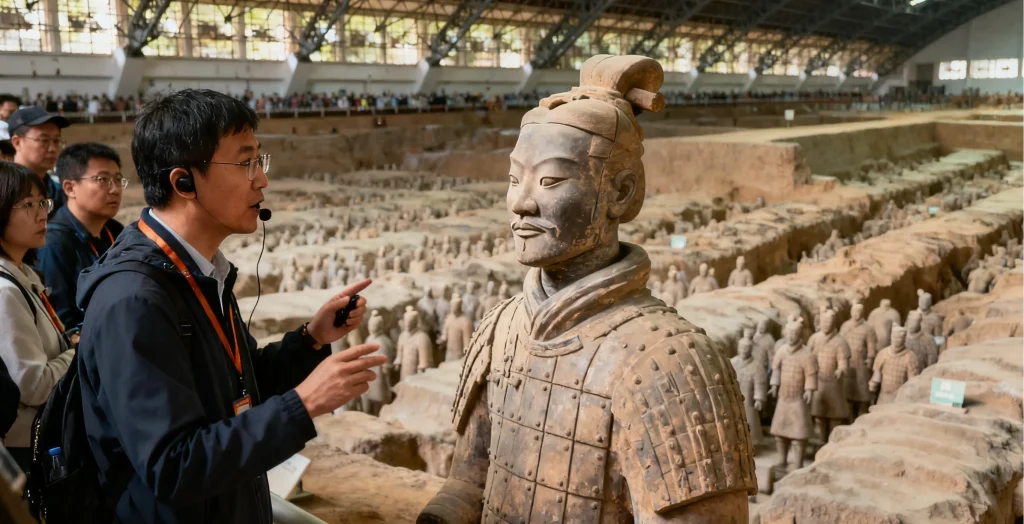
Morning — Xi’an City Wall. The Xi’an City Wall is more than “a wall”: together with the moat, drawbridges, sluice towers, arrow towers, main towers, corner towers, parapets, and crenels, it forms a tight, three-dimensional urban defense system. A cycling tour is in essence an inspection of a complete set of ancient military engineering. Ward-and-market urban layout. From atop the wall, you can clearly see the Bell Tower at the center, with four main streets leading to the city gates in the four directions. This pattern stems from the Tang dynasty and reflects the ancient Chinese grid-based urban planning and the “left ancestral temple, right altar; court in front, market behind” city-building concept from the Rites of Zhou · Kaogongji.
Afternoon — Shaanxi History Museum → Muslim Quarter. Visit the Shaanxi History Museum, lauded as the “pearl of ancient capitals and a treasury of China,” whose collections range from Zhou bronzes to Han pottery figurines and Tang gold and silver ware. Afterwards, head to the Muslim Quarter to feel the city’s everyday vitality. This area dates back to the Tang, once part of Chang’an’s Western Market and a settlement of foreign merchants (Persians and Arabs). Through Song, Yuan, Ming, and Qing, it formed today’s mosque-centered Muslim community pattern. Every mosque here (such as the Great Mosque of Huajue Lane) and every dish (such as mutton soup with flatbread and spicy pepper soup) is a living testament to ethnic blending and cultural exchange along the Silk Road—the cosmopolitan heartbeat that continued even after “Chang’an” became “Xi’an.”
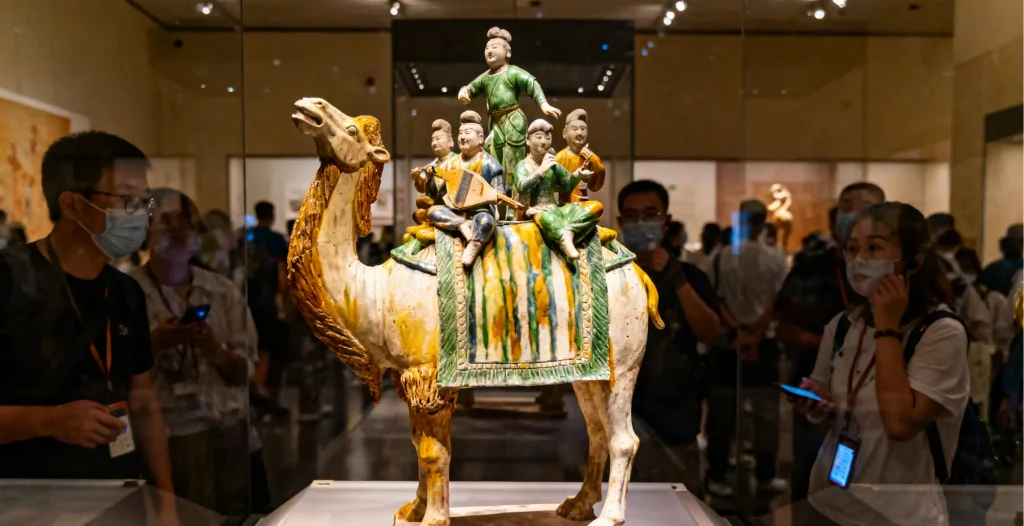
Morning — Chang’an Twelve Hours Theme Block. An immersive Tang-style market-street experience: you can don historical costumes, take photos, watch performances, and taste foods to deeply experience Tang culture. Afternoon — Small Wild Goose Pagoda (Xi’an Museum). The Small Wild Goose Pagoda is quieter, with a slender, elegant silhouette, and the Xi’an Museum offers a more comprehensive understanding of the city’s development. The pagoda is famed for “splitting three times and closing three times”—cracking during major earthquakes and then naturally closing during aftershocks. This is not a myth: based on local geology, ancient craftsmen created a hemispherical foundation, achieving remarkable seismic resilience. The pagoda stands within Jianfu Temple, an important translation site in the Tang; its lingering “Morning Bell of the Wild Goose Pagoda” was once one of the Eight Sights of Chang’an.
End of tour.
